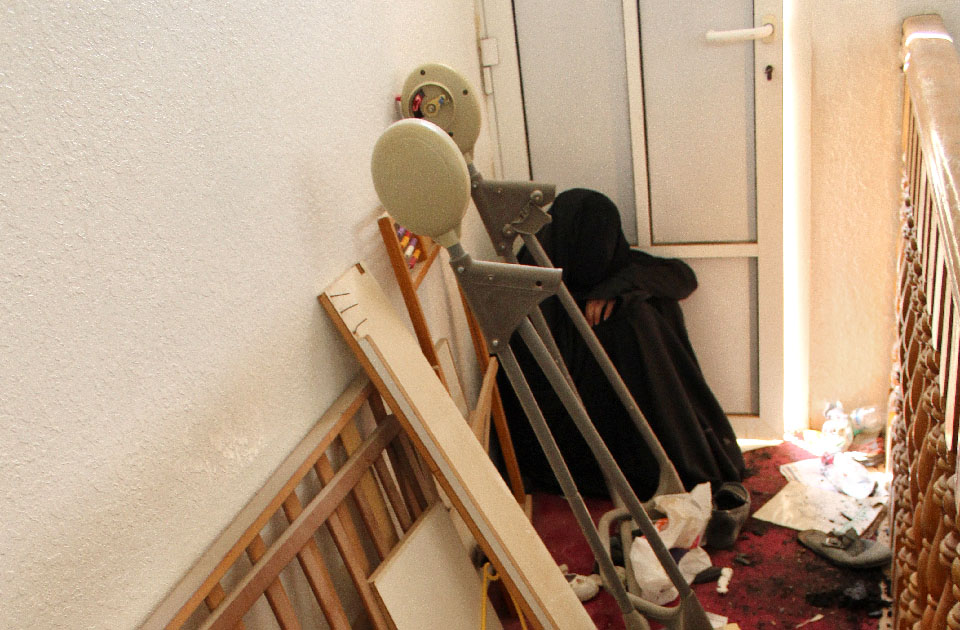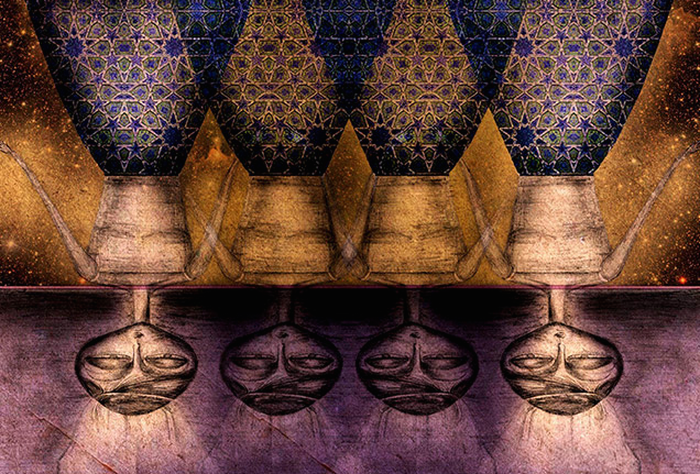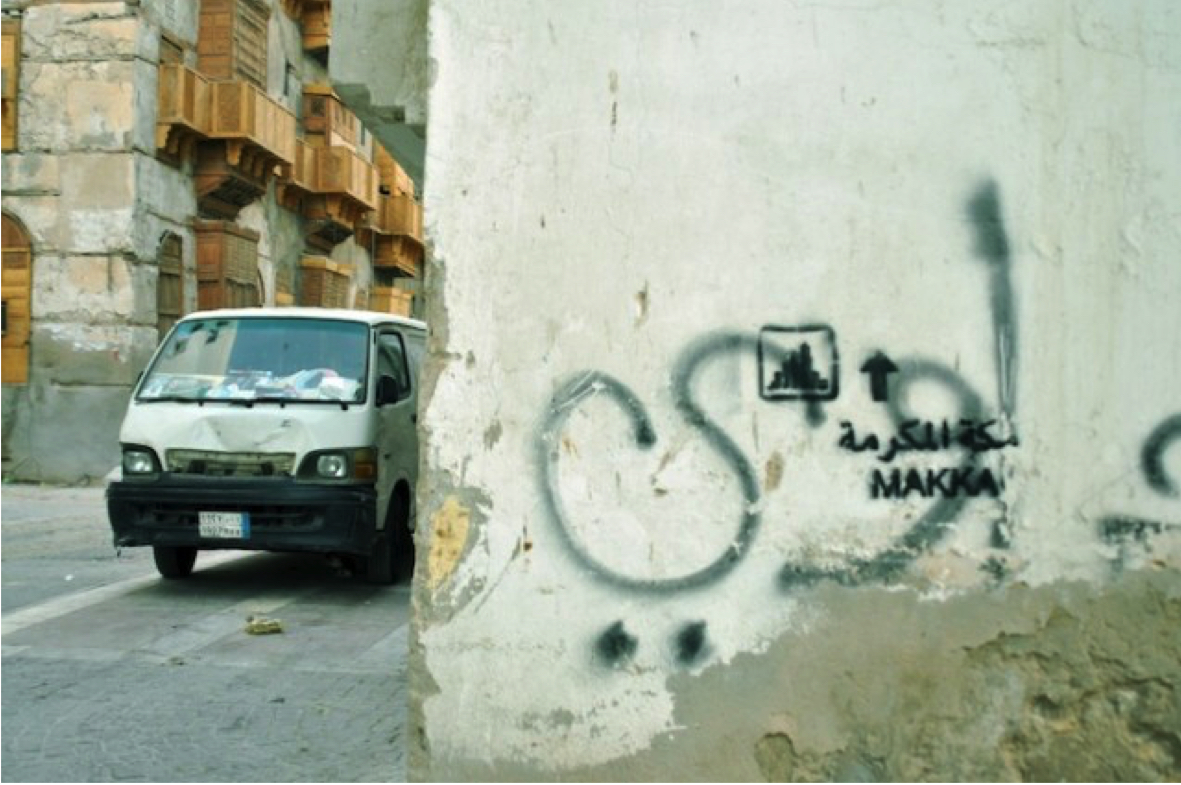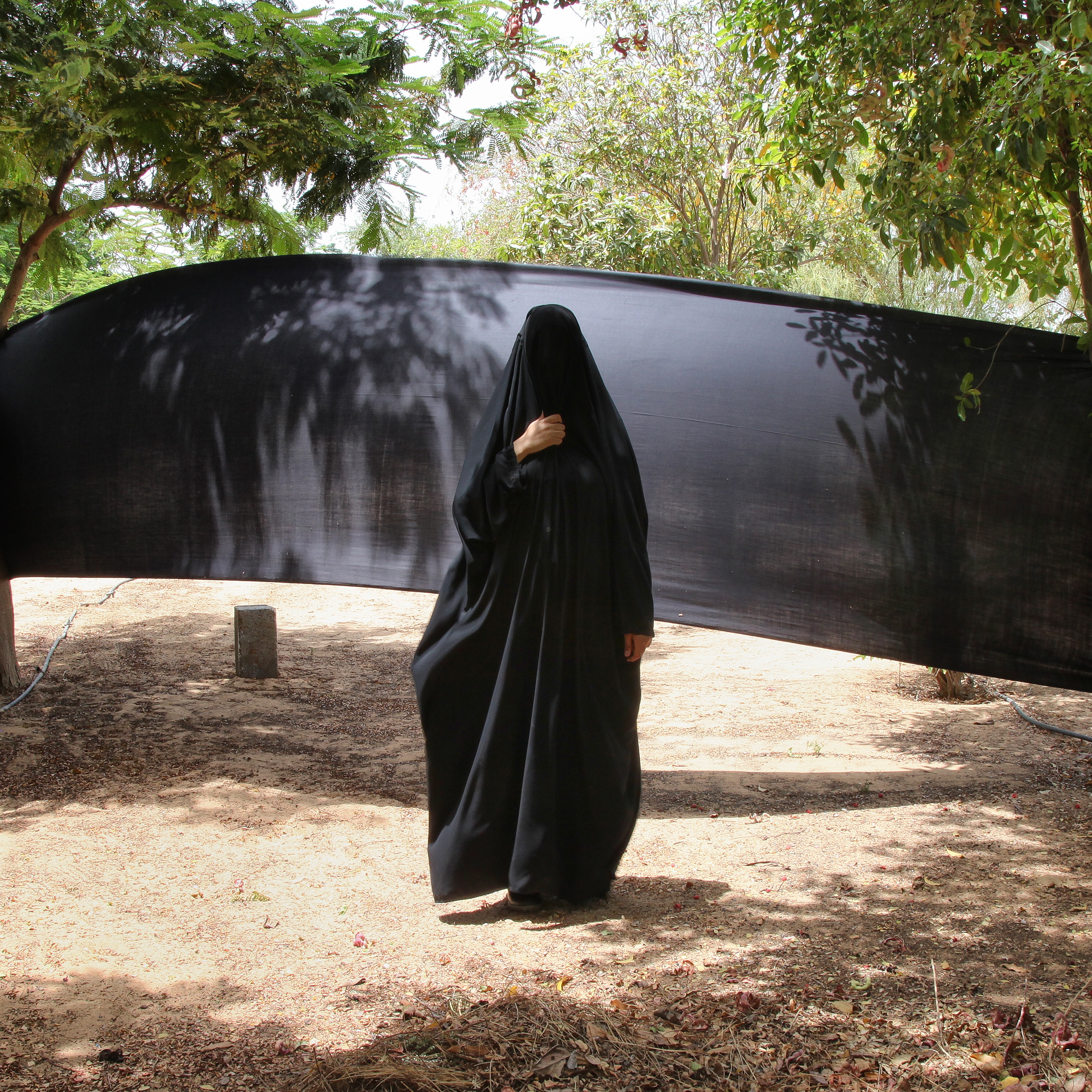There’s never been a better time to be an artist in Saudi Arabia
Photographs courtesy Alāan Artspace and its artists
Just a short while back, contemporary art and artists in Saudi Arabia were something of a rarity. Still, there is comparatively little mention of the Saudi art scene in discourses revolving around the art of the Middle East, and many Westerners find it difficult to fathom that something as boundless and expressive as the arts are not repressed in one of the most conservative countries in the Middle East. However, things are changing in the land of the House of Saud - slowly, but surely. Not only are contemporary art galleries sprouting around the country, but numerous groundbreaking organisations and initiatives have also emerged (especially since the beginning of 2012), shining a light on a hitherto neglected and misperceived art scene.
Alāan Artspace, founded just last month in Riyadh by Director Neama Alsudairy, is just one such organisation. Curated by Sara Raza, former Curator of Tate Modern’s public programmes, Alāan (lit. ‘Now’) features a gallery and art research library, as well as myriad non-commercial educational programmes, making it in many ways a ‘first’ for the nascent Saudi art scene.
I recently spoke with Neama and Sara about the gallery, it’s inaugural exhibition, Soft Power, and the Saudi art scene in general.
From what we’ve heard, Alāan seems to be an incredibly comprehensive initiative. Not only do you have a gallery, but you also act as an educational hub, and have your own in-house library. What exactly is Alāan’s mandate, and what sets it apart from the other galleries in Jeddah?
Neama - Given the shortfall of contemporary arts organisations in Saudi Arabia - especially those that are fully curated - Alāan Artspace seeks to operate on a number of levels to respond to the real need and interest from the community. Our mandate is to nurture emerging and established contemporary artists and designers from Saudi Arabia, the region, and across the globe. To this end, Alāan Artspace has been designed as a multi-functional space. Our schedule of programs includes a diverse mix of offerings for artists, students, families, and collectors. Alāan Artspace is a place for Saudi nationals, locally based expatriates, and art lovers both across the region and internationally, who are interested in Middle Eastern art. Our audience includes artists, designers, and curators, as well as those who are new to the arts. Along with providing a range of entry points for our varied audiences, Alāan’s shop, restaurant, and café give us the flexibility to take risks with non-commercial as well as commercial exhibitions. This strategy allows us to support new commissions, stock an arts research library, and hold educational non-profit arts programming.

Sarah Abu Abdallah - Untitled
When it comes to the Arab world, we constantly hear about amazing exhibitions, art fairs, auctions, and other developments in countries in the Persian Gulf region, and to a lesser degree, Lebanon. Why are we only just beginning to hear about the wealth of artistic talent in Saudi Arabia? It’s somewhat surprising to hear, for instance, that the world’s first museum of contemporary Saudi art is in Amsterdam!
Neama - There is a tremendous amount of energy around the arts in Saudi, but it’s true: our contemporary art scene has relatively few institutions. It takes time to build the infrastructure of an arts scene; however, a tremendous amount has happened in just the past few years. Edge of Arabia has been instrumental in capturing international attention towards Saudi art, and there are several very strong galleries in Jeddah. This momentum is continuing to build, and Alāan’s name – which means ‘now’ in Arabic – reflects the energy of the art scene in Saudi Arabia, and the feeling in Riyadh that spaces like ours have been long overdue.
Your inaugural exhibition – which features the works of a number of emerging artists – is entitled Soft Power. What is the story behind the name? Are we right to assume that international relations are part of the show’s agenda, on some level?
Sara - Soft Power features the works of three Saudi Arabian artists: Sarah Abu Abdallah, Sarah Mohanna Al-Abdali and Manal Al Dowayan. The works in the exhibition question, and at times subvert clichés of daily life, providing a unique look at the nuances present within Saudi Arabian contemporary society. Instead of offering a grand political statement, the exhibition employs a nuanced, and at times humorous approach towards exploring the position of women within contemporary society, forgoing militant tactics for those of solidarity, ambiguity, and irony.
Alāan’s name – which means ‘now’ in Arabic – reflects the energy of the art scene in Saudi Arabia, and the feeling in Riyadh that spaces like ours have been long overdue
The name of the exhibition both references this approach, and the themes of the works themselves, which seek to turn the expected narrative on its head. Sarah Mohanna Al-Abdali’s paintings and works on paper depict female figures whose bodies are anonymously cloaked in geometric patterns, including a series of arayis (brides) planted head first into the soil, their skirts blooming into crystalline kaleidoscopes of colour in the blue sky above. Along with new commissions still in progress, Sarah Abu Abdallah’s video of a wrecked car sourced from a local junkyard presents an ambiguous series of questions. Although strewn with personal items that could provide clues to the owner’s life, its narrative is unresolved, and through the performative gesture of painting the car pink, the artist superimposes her own experience onto the object. Manal AlDowayan’s installation of large prayer beads painted through community workshops with the names of individual, heretofore ‘anonymous’ women, highlights the unique social attitudes towards women’s names in Saudi society.
How, in your opinion, have the few galleries in a relatively restrictive country such as Saudi Arabia been able to thrive thus far? Even in Turkey - a country considered by many to be extremely liberal and ‘Western’ – we’ve heard about attacks on galleries, and groups of people who aren’t overly enthusiastic (to say the least) about the burgeoning art scene in Istanbul.
Neama - As Alāan Artspace was developing, we were inspired by a wide range of arts institutions, both in the Middle East and internationally, especially those with integrated educational programmes. More than anything, though, we have been inspired by conversations with people from Riyadh and across Saudi Arabia about what they felt we needed to provide to our community. We feel as though this commitment to conversation and conscious attention to the cultural context within which we work is essential for operating in any situation, although it’s perhaps most important in countries such as Saudi Arabia, where the contemporary arts scene is relatively nascent.

Sarah Mohanna Al-Abdali - Talat Arayes
Sara - We consider it a responsibility of ours to foment dialogue within this context in a way that will spur new artists and compel the scene to grow. We are not seeking to alienate anyone, and we are also not going to shy away from showing art that has real potency. If anything, we feel as though an awareness of, and respect for our cultural environment only leads us - and the artists we work with - to be even more thoughtful and creative. This sort of navigation is something that affects all artists who strive to speak to an audience from an authentic perspective. Within this framework, we feel as though we have a great deal of flexibility in sharing works, holding dialogue, and supporting an open discussion of what contemporary art means in Saudi Arabia, and how artists in the MENA region create.
In general, how would you describe the art scene in Saudi Arabia? In what ways does the Government support the arts? What are the major benefits and drawbacks of being a gallery owner or a practising artist in the country?
Neama - The art scene in Saudi Arabia is relatively small, but it is growing. In some ways, the underdeveloped scene is actually liberating, since there is so much room for growth, but at times it presents a real challenge. We could not do what we are doing here today without the support of our local and national Government. This support is evidenced in projects as varied as the Al-Muftah Village cultural initiative in Abha, and the first-ever pavilion from the Kingdom of Saudi Arabia in the Arsenale of the 2011 Venice Biennale. All this support comes from various governmental and Government-related organisations, such as Saudi’s Ministry of Culture and Information, Saudi Aramco, the King Abdulaziz Center for World Culture, the Saudi Arabian General Investment Authority and the Saudi Research and Marketing Group.
More than anything, we have been inspired by conversations with people from Riyadh and across Saudi Arabia about what they felt we needed to provide to our community
It is a great benefit to the overall contemporary art movement in the region that there is such strong international attention focused on the Middle East at the moment. However, this also comes with a challenge, as the global art scene still has many misconceptions of the region. As Saudi and Middle Eastern art in general garners more attention internationally, it is all the more important for home grown institutions like Alāan Artspace to develop and invest in nurturing emerging and mid-career artists.

Sarah Mohanna Al-Abdali - Mecca Street Sign
Among the works being produced in Saudi Arabia, what themes and subjects would you say are most prevalent?
Sara - There is a real diversity of work coming from Saudi Arabia, so it is hard to give generalisations of the overall scene. Materials and methodologies range from painting and works on paper, to sculpture, installation art, and video. Photography is a very active medium. There is even a growing graffiti/street art scene, and an increase in young designers working in graphics and applied arts. Across the Arab world, there are many artists who are exploring issues of identity, as well as their relationship to social realities in the region and globally, and this is no different in Saudi Arabia.
How do you envision the future of Alaān, and the Saudi art scene for that matter? Where can we expect to see you five years down the line?
Neama - We hope the future finds the Saudi art scene to be more complex and multi-layered, with a diversity of commercial and non-profit organisations engaging with artists and art lovers in a number of different modalities. We also envision the future Saudi art scene to be even more integrated into what is happening across the Persian Gulf (a trend that Athr Gallery is already leading by participating in Art Dubai), the broader region (following the lead of Edge of Arabia traveling to Istanbul), and internationally (expanding on the strong interest in the Middle East that has been evidenced across the art world). We also envision more opportunities for young artists, including both students and emerging artists beginning their careers.
We believe that Alāan Artspace will have a significant impact because it is centered around a critically-developed program of education and exhibition that is homegrown and regionally responsive. Promoting contemporary art in a way that brings the community into the dialogue is certain to bring change and growth to the art scene both locally, and at large.

